Palermo, the capital of Sicily and fifth largest city in Italy, stands like a fascinating jewel in the heart of the Mediterranean. Its millennial history sees the intertwining of multiple cultures due to the city's various dominations, first by the Arabs, then by the Normans and finally by the Spanish. Its artistic and cultural heritage is of inestimable value.
From the majestic Norman architecture, such as the Palace of the Normans and the Palatine Chapel, to the evocative atmosphere of the Arab quarters.
Palermo is a kaleidoscope of eras and cultures that come together in unique harmony.
In addition to its incredible architectural beauty, Palermo seduces visitors with its intense, Mediterranean flavors; in fact, Palermo's cuisine is considered among the finest in Italy, thanks in part to its many foreign influences: from panelle and arancine, to exquisite preparations of fresh fish, every taste is an unforgettable sensory journey.
This is a detailed guide on what to do in Palermo in a day. It may happen that you are just passing through because you are passing through Sicily or that you have stopped in Palermo on a cruise ship, in these cases your time in the city is limited and you need to optimize it in the best way possible. Through a well-structured itinerary, we will take you along the streets of the city of Palermo, letting you taste the typical specialties, passing through the most important neighborhoods and squares of the city. This is: what to do in Palermo in one day! Amunì.
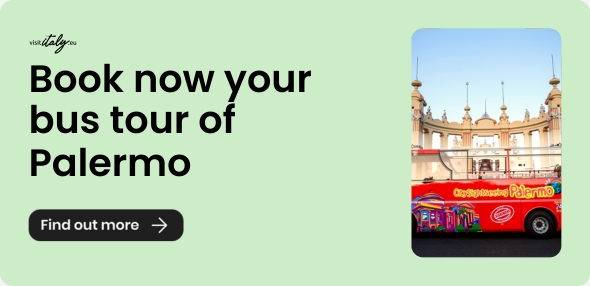
24 hours in Palermo: a melting pot of history, culture and flavours
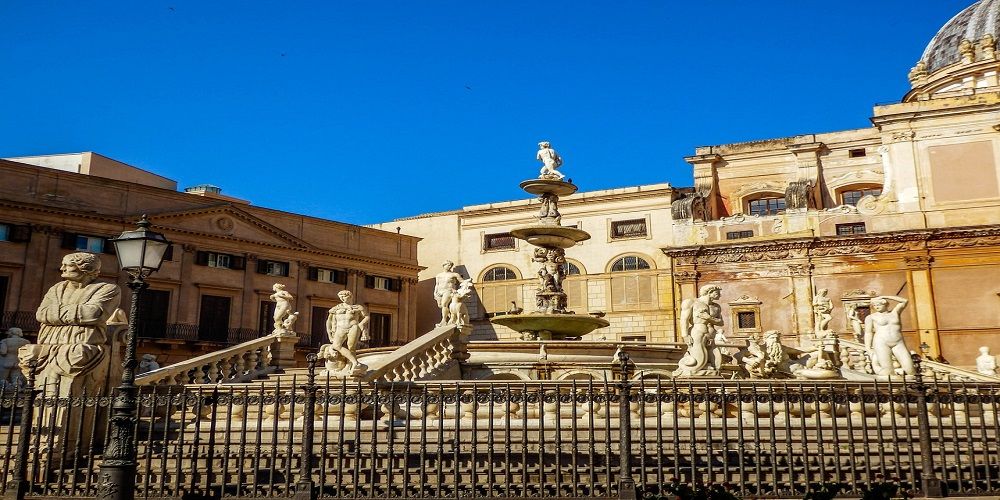
Palermo is a lively, pulsating city where tradition and modernity blend harmoniously, creating a lively union. Every year it is visited by millions of tourists, partly because cruise ships land, partly because the city's value for money has few equals. During the summer, the city experiences a real boom, considering that there are many beaches to visit and enchanting seas to bathe in.
Palermo's tradition and culture can be found directly in its historical markets, such as the Ballarò market or the Vucciria market, which teem with life and scents, offering an authentic experience of local culture. Its streets enlivened by music, art and folklore invite you to lose yourself in picturesque alleys and historic squares, always discovering new enchanting corners.
Palermo is a city that conquers and enchants, a place where history, culture, tradition and modernity intertwine in an unforgettable experience. Whether you are passionate about art, architecture, gastronomy or simply wish to immerse yourself in a unique atmosphere, Palermo has something to offer everyone. Let yourself be captivated by its timeless charm and prepare to experience an exciting journey into the heart of Sicily because 24 hours in Palermo is more than enough time to convince you to stay or return!
Palermo is the city with the most beautiful panorama in the world. The valley between two seas is beautiful, the lemon groves and orange gardens so perfect. Many of the young men have faces that smell of Greece, others just like Arabs, they look like so many sculptures walking around under the open sky
9 a.m: Politeama Theatre, breakfast in Via Maqueda
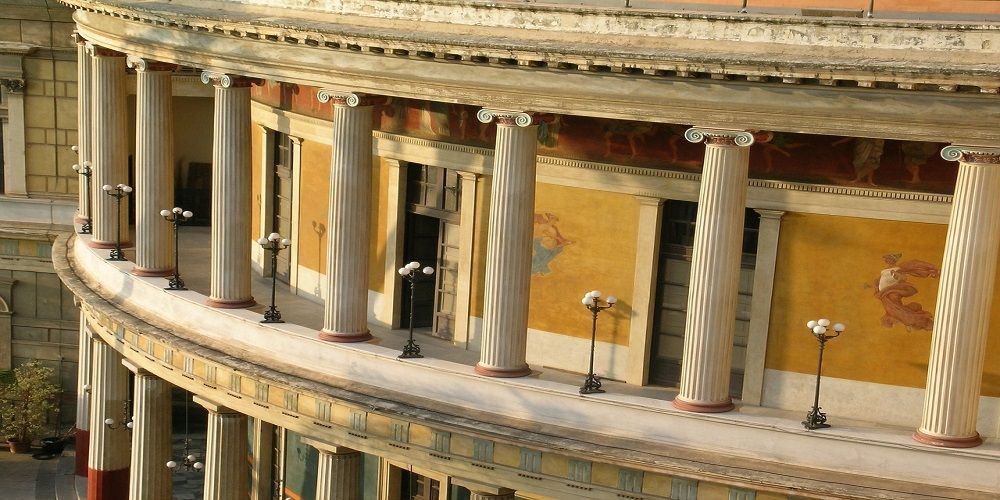
The enchantment that Oscar Wilde felt for Palermo continues to exist and be passed down from generation to generation through the centuries, inspiring travellers from all over the world to discover the beauty and authenticity of this extraordinary Italian city. And here we are finally ready to experience 24 hours in this magnificent Mediterranean city: begin here our itinerary on what to do in Palermo in one day.
Our itinerary in the city of Palermo starts from the Teatro Politeama Garibaldi or more simply Teatro Garibaldi, located in Piazza Ruggero Settimo, in the heart of the city. The Politeama Theatre is the largest opera house in Italy and is considered one of the largest in Europe, a true excellence for the Italian territory, behind only the Opéra Garnier in Paris and the Staatsoper in Vienna. The Politeama Theatre is home to the Sicilian Symphony Orchestra, dates back to 1874, and is adorned by a large triumphal arch in neoclassical style surmounted by a bronze quadriga representing the God Apollo.
You can visit the theatre inside if you wish but it takes a long time, already admiring it from the outside gives unique sensations. In the square in front of the theatre you can take a stroll, arriving at Via della Libertà, one of the great arteries that connect the city, continuing on to Via Maqueda, the focal point of our itinerary.
An obligatory stop on Via Maqueda at the famous Palermo Store Cafe, a true institution in the city where you can sample the classic Sicilian breakfast: brioche with ice cream, granita and a cannolo. In the bar you can also buy official products of the Palermo football team, for all football lovers.
10 a.m: The Arab Quarter: La Kalsa
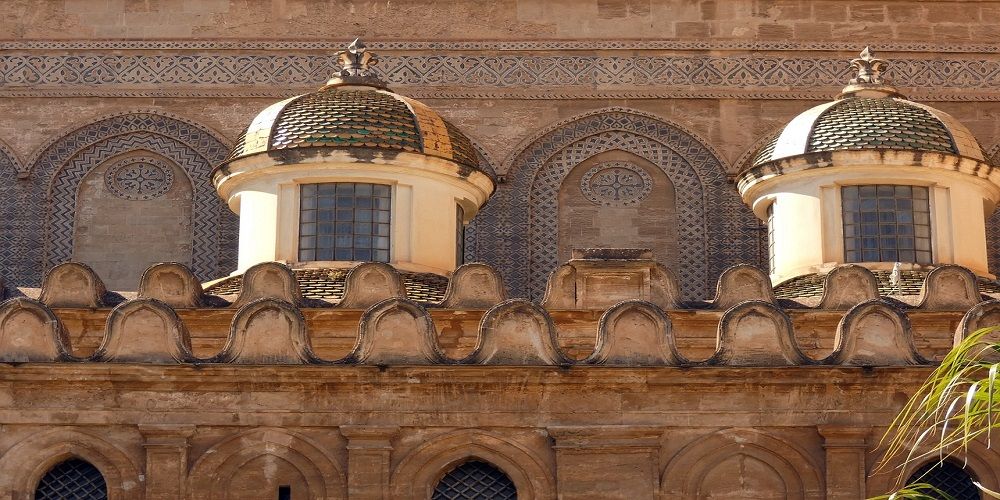
The Kalsa is one of the liveliest and most folkloristic neighbourhoods in the city of Palermo. La Kalsa is located in the city's historical centre and takes its name from the Arabic ‘al-Khalisa’, meaning ‘the chosen one’, recalling its glorious past as the seat of the fortified citadel of the emir and his court during the period of Islamic rule.
Its Arabian nature can be seen in every corner, from the facades of the buildings, to the building materials used, to the food that is sold. When you immerse yourself in the La Kalsa district, everything is very Arab-like; you won't even feel like you are still in Sicily.
In addition to the historical monuments, La Kalsa also offers a lively gastronomic scene, with numerous restaurants, trattorias and bars serving typical Sicilian dishes. The district is also animated by a thriving community of artists and craftsmen, who exhibit their works in the numerous galleries and workshops.
Lose yourself in the alleyways: the best way to discover La Kalsa is to get lost in its picturesque lanes. Let your instincts guide you and discover hidden corners and unexpected treasures. Highlights include Palazzo Abatellis, the Church of Santa Maria dell'Ammiraglio and the Fontana Pretoria, right along Via Maqueda.
Where is the Arab quarter located? Between Via Maqueda, Via Vittorio Emanuele, Via Lincoln and the Foro italico.
11 a.m: The Four Corners, the Pretoria Fountain
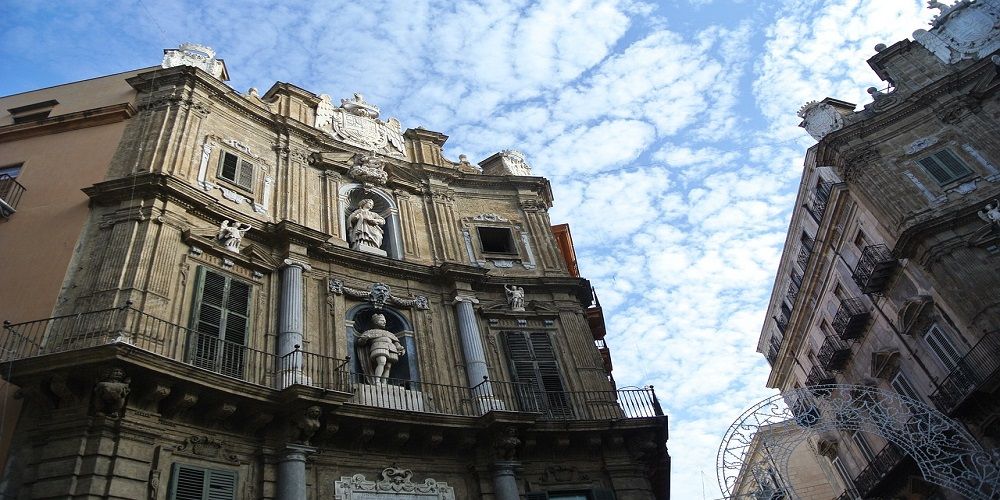
Before the sun gets too high, we continue our stroll through the heart of Palermo, arriving at the famous Quattro Canti and the Fontana Pretoria: a baroque combination in Palermo!
Piazza Vigliena, better known as the Quattro Canti, is located in the heart of Palermo, along the major artery connecting Palermo's train station to the port, along Via Maqueda. It is an octagonal-shaped square in typical Baroque style, a true masterpiece of architecture and symbol of the city.
The buildings that meet to form this square are smooth and delicately cut, forming a perfect circle when viewed from above. Typical are the photos taken by tourists placed in the centre of the square to square the sky.
The Quattro Canti are characterised by white plaques on the walls of the four buildings and fountains depicting the four seasons: summer, spring, autumn and winter.
Just before the Quattro Canti, at the centre of Piazza Pretoria is the Pretoria Fountain, a 16th-century work by the Florentine sculptor Francesco Camilliani. Originally made for the garden of Palazzo Colla in Florence, the fountain was purchased by the Palermo Senate in 1581 and transferred to Palermo, where it soon became a city landmark.
The fountain consists of three concentric basins, decorated with statues depicting mythological deities. The upper basin is surmounted by a statue of Bacchus, god of wine.
The Quattro Canti and the Fontana Pretoria are two inseparable elements that define Palermo's urban landscape. Their harmony and beauty contribute to making the city unique and special.
12 noon: Palermo Cathedral
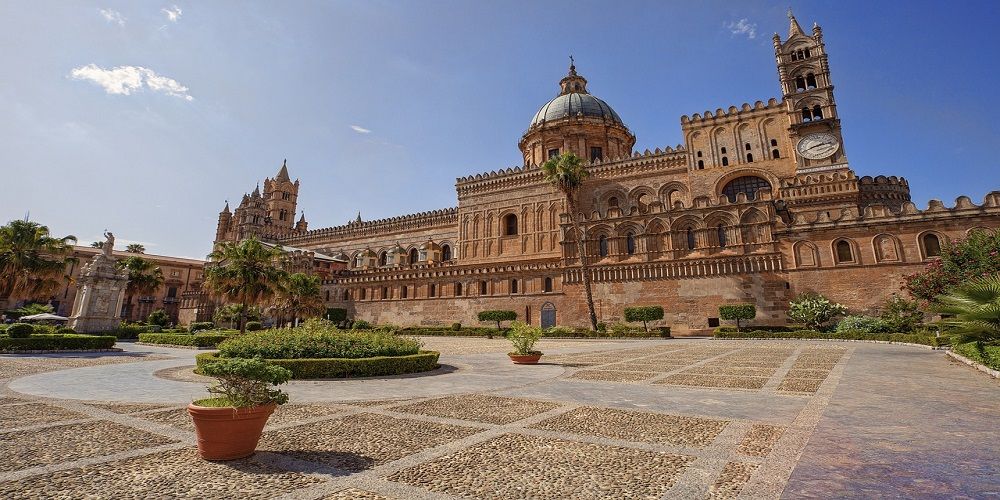
After the Quattro Canti, continuing our walk we will see on the horizon the gigantic and majestic Metropolitan Cathedral of the Holy Virgin Mary of the Assumption, the most important place of worship in the city.
The Cathedral is an unmissable symbol of the city and is located just a 10-minute walk from the Teatro Massimo.
The Cathedral was founded in the 12th century by the Normans and encompasses the architectural styles of different eras, telling the rich history of Palermo.
On the outside, the main façade is in Catalan-Gothic style and is characterised by an imposing interplay of volumes and rich decoration. The spires, ogival arches and portals carved with intricate sacred figures testify to the skill of the Norman artists. Inside, the Cathedral holds mysteries and treasures. It has a central nave punctuated by imposing columns and is adorned with medieval frescoes, Byzantine mosaics and Renaissance sculpture, encapsulating the history of art.
Of particular note is the Cathedral Treasury, one of the most important in Italy, which houses relics, jewellery and precious objects of inestimable value. The treasure includes, among other things, Constance of Aragon's crown of precious stones.
You can decide to enter the cathedral alone or take the tour, which lasts about two hours. Admission tends to be free, with the exception of the monumental area, where admission costs €15.
1 p.m: Porta Nuova, Norman Palace and Palatine Chapel

The two façades are different: the façade facing the city is the more elaborate, enchanting the eye with a riot of sculptures and bas-reliefs. In the centre of the arch stands the imperial eagle, the symbol of Charles V, to whom the gate, once called ‘Eagle's Gate’, owes its present name. On either side of the gate are statues of the four patron saints of Palermo: Christina, Nymph, Agatha and Lucy. The facade outside the city, on the other hand, has a more sober appearance, dominated by a large bas-relief depicting the triumph of Charles V over the Turks.
Adjacent to the Porta Nuova is the Palazzo dei Normanni. The Palazzo dei Normanni or Royal Palace is located in the historical centre of the city. It is currently the seat of the Sicilian Regional Assembly but for many centuries it was a real fortress, the oldest royal residence in Europe, home of the Kingdom of Sicily.
Inside the Palazzo dei Normanni, on the first floor, is the Palatine Chapel. Built at the behest of Roger II between 1130 and 1143, this royal chapel is a triumph of mosaics, sculpture and architecture reflecting the magnificence and power of the Norman kingdom of Sicily.
The Palatine Chapel is covered with gilded mosaics depicting biblical stories and scenes from the lives of saints. The central dome features a majestic Christ Pantocrator surrounded by angels and saints. The side walls are decorated with scenes from the Old and New Testaments, the lives of St. Peter and St. Paul, and legends related to the Norman rulers. It has now been recognised as a UNESCO World Heritage Site and is one of Palermo's most important tourist attractions.
Discover more about visiting the Norman Palace and the Palatine Chapel2 p.m: The Ballarò market: an explosion of colours, flavours and sounds in Palermo
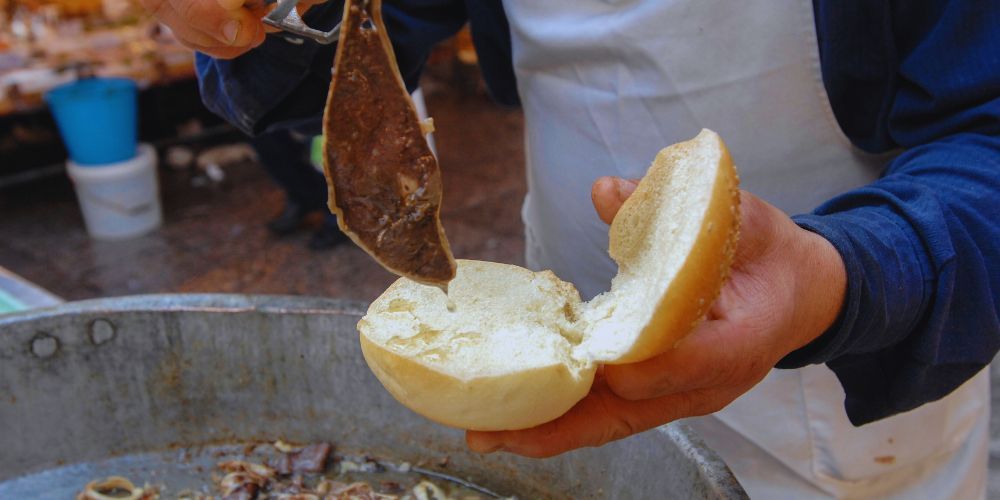
At 14:00 when the sun is high in the sky it is best to take shelter in the shade, eating something typical of Palermo, so the next stop is the Ballarò market. Turning back towards Via Maqueda, through some narrow alleys you will reach the Ballarò market, an essential stop if you only have 24 hours in Palermo.
The Ballarò market is Palermo's oldest and largest market, located in the heart of the city's historic centre. It is a vibrant, chaotic, colourful place where you can breathe in an authentic and popular atmosphere. Among its colourful stalls you can find everything from tropical fruits to Sicilian vegetables, from freshly caught fish to fine meat.
The Ballarò market is also a place where you can immerse yourself in the culture and traditions of Palermo. It is a true sensorial experience because here you can also taste typical local gastronomic specialities, such as Sicilian cheeses, typical cold cuts, preserves and traditional sweets.
We recommend trying the famous sandwich with spleen or in Sicilian ‘Pane cà Meusa’, a humble sandwich with spleen and calf's lung cooked in lard. Another typical dish of Palermo's street food tradition is ‘sfincione’: a kind of high pizza with a very soft dough, topped with sauce, onion, anchovies and caciocavallo cheese.
Let's not forget that the real queen of street food is still her: the arancina. Arancina with an ‘a’, because the arancina in Palermo is female. Let's end on a high note with a plate of panelle e crocchè, usually a plate of 5 panelle + 5 crocchè at the modest price of 2 €, combined with a cold beer is the perfect aperitif!
3 p.m: The Massimo Theatre
After lunch, our tour of the city of Palermo resumes at the Massimo Theatre, also known as Massimo Vittorio Emanuele Theatre, the largest opera house in Italy and one of the largest in Europe. A true Italian excellence! Inaugurated in 1897 after a run of more than twenty years, it is a true masterpiece of neoclassical architecture and an undisputed symbol of the city.
Externally, the theatre is striking for its immense majesty; it towers in the middle of the square and can be seen from everywhere. Being in a very central place in the city, one only has to follow the flow of people walking by to find oneself in its presence. The area is very touristy and there are plenty of shops in the vicinity to buy souvenirs or have something to eat.
Inside, the theatre is as spectacular as outside. The main hall, called the Great Hall, is a real gem. Shaped like a horseshoe, it is richly decorated with gilded stucco, red velvet and precious marble. The ceiling, frescoed by Filippo Quaroni, depicts the triumph of Apollo and the Muses. The capacity is approximately 1,387 seats.
Whether you are a fan of opera, classical music or simply architecture, a visit to the Teatro Massimo is a must if you spend 24 hours in Palermo. It is a place that leaves you breathless.
4 p.m: Hop-on Hop-off tour of the city of Palermo

When you have little time to visit a city, as in ours, you have to optimise time and space, a smart move is to visit the city through an organised sightseeing bus tour. What to see in Palermo in a day? Find out through the hop-on hop-off bus tour.
The hop-on hop-off bus service can be found all over Italy, the one in Palermo is divided into two lines: line A showing the historical centre and all the most important buildings and sites; line B showing the Liberty district, the main villas and the Zisa Castle. Another route leads to the Cathedral of Monreale, a famous Norman jewel where the Cathedral and the Fortress of Monreale are located.
The hop-on hop-off tour allows complete freedom of movement, getting off at one place, visiting it and getting back on the next bus. Through the app you can easily find your way around, find out the bus routes and know the location of the buses in real time, so you always know how much time you have to visit until the next tour.
For more information on the Hop-on Hop-off bus tour in Palermo5 p.m: Mondello: the beauty of the sea with dessert
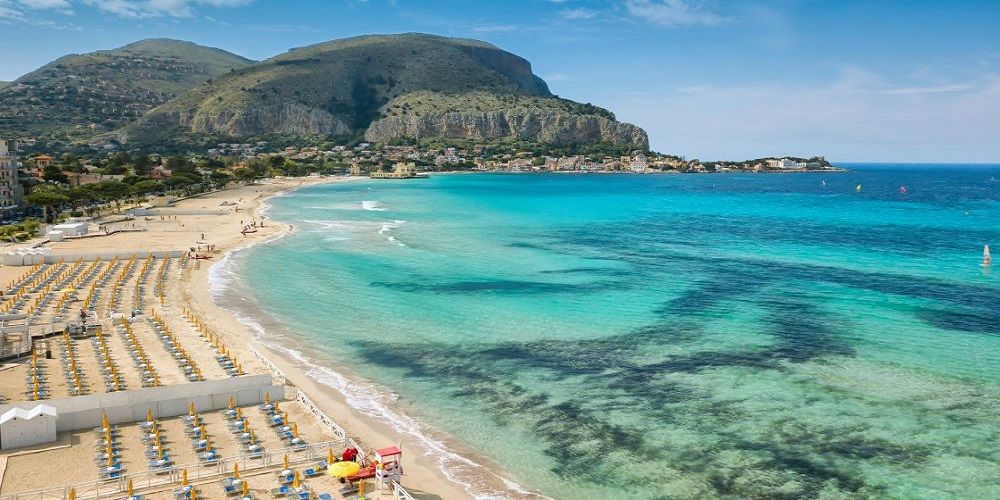
In the afternoon, we recommend a trip from Palermo to visit the nearby Mondello, a popular seaside resort famous throughout Sicily. Mondello beach is the city's main attraction with its golden sand and crystal clear waters. It is a perfect place to relax in the sun, take a refreshing dip or enjoy water sports such as windsurfing, kitesurfing and sailing.
Mondello is beautiful all year round as it is a place where people live, in fact there are many small villas by the sea. In Mondello you can relax in the sun, take a walk on the beach, but also go trekking, because in the Capo Gallo Nature Reserve there is a true unspoilt oasis in nature, full of hiking trails that lead to hidden coves and sea gorges. We recommend suitable clothing, comfortable or technical shoes.
Culturally, Mondello boasts a rich heritage, with several Art Nouveau villas and historic churches to visit. The Museo delle Conchiglie houses a vast collection of shells from all over the world.
How to get to Mondello? By car, you can easily reach Mondello from Palermo via the A29 motorway that connects Palermo to Trapani and passes through Mondello. If you prefer public transport, you can take bus 806 from Palermo to Mondello. The journey takes about 45 minutes and the ticket costs €2. You can find bus timetables and buy tickets online at the AMAT (Azienda Municipale Autonoma Trasporti) website.
We end the afternoon on a high note with a great brioche with ice cream at the famous Bar Galatea, one of Mondello's most important establishments, famous for its ice cream and its brioche with ice cream considered among the best in the city of Palermo, mandatory stop if you only have 24 hours in Palermo.
8 p.m: end of the tour with a pistachio dinner!
Everywhere in the city of Palermo you can find something cooked with pistachios. Pistachio is a typical Sicilian speciality that has arrived on the tables of people all over the world year after year. Today, it is used in cooking, pastry making and ice cream making. Everyone likes pistachios so we cannot end the day without eating some.
The place matters little because you can eat pistachios anywhere, in the Arab quarter there are many places that cook sfincione made with pistachios, burrata and mortadella, or there are the typical Palermo restaurants that serve delicious pistachio arancine. A real treat, however, is pasta with pistachios, such as the one served in Pacinotti's restaurant, considered the home of pistachios, a recommended stop if you want to end your tour of Palermo in a day.
9 p.m: Nightlife in the centre of Palermo
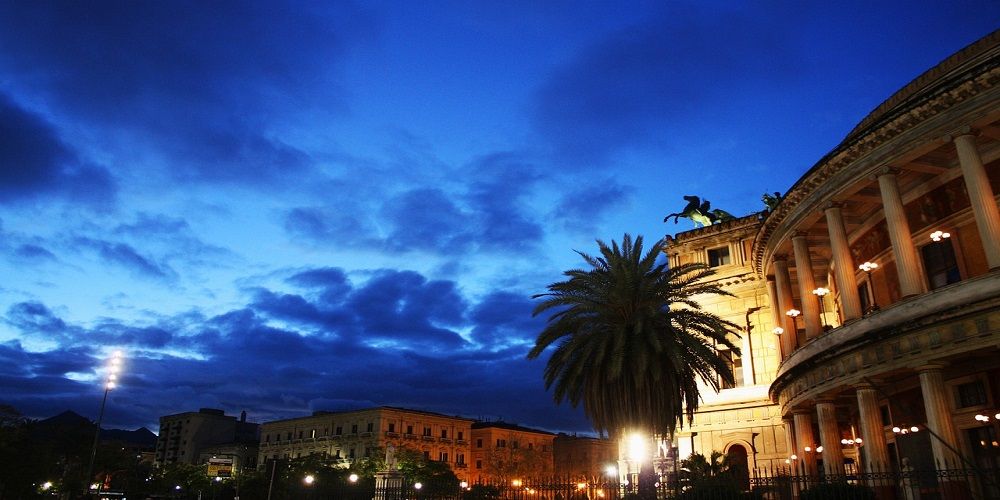
If after dinner you plan to stick around for an aperitif, a classic bitter, a beer or a glass of wine with friends, then I recommend visiting Piazza Sant'Anna and the Vucciria. These are two of the places where Palermo's nightlife takes place, frequented by young people.
Piazza Sant'Anna is located in the centre of Palermo, a stone's throw from the Teatro Massimo. It is a gathering place for many young people and tourists because it is adorned with many bars and wine bars, and in the alleys leading off from the square there are all kinds of places to have a cool drink.
The movida is concentrated here but not only, in the Piazza della Vucciria, where the famous Vucciria market takes place, in the evening it turns into an open-air disco, there are clubs with music, karaoke, dancing and singing, you can feel the folklore and warmth of the square and the whole city. A great way to end one's 24 hours in Palermo.
Tour in Palermo in 24 hours: the alternatives

Palermo is a very versatile city that has so much to offer, we have tried to create an ad hoc itinerary on what to do in Palermo in one day but the treasures that this city hides are many and the alternatives are just as numerous.
It must be emphasised that Palermo is a city full of fascinating places, inviting you to get lost in its streets and squares, so you would need several days to see it all, even a weekend. A weekend in Palermo is perfect!
All the stops mentioned are easily reached by metro in a few minutes or even on foot, allowing you to optimise your time, however, if you have the desire to explore more places, we recommend you consider some options such as the Street art tour. Palermo is a city rich in street art, with murals decorating both historic and more peripheral neighbourhoods. A guided tour to discover Palermo's street art is an opportunity to admire open-air works of art and learn about the history and messages of the artists who created them.
Another noteworthy alternative is a visit to Monreale, a small town in the province of Palermo. Its most important monument is undoubtedly the cathedral, which - since 2015 together with that of Cefalù - has been declared a UNESCO World Heritage Site.
If you plan to visit Palermo in the summer, then get on the first bus with direction: Riserva dello Zingaro, a nature reserve located in Sicily, between San Vito Lo Capo and Castellammare del Golfo. The Zingaro Reserve is an ideal place for nature and trekking lovers, but especially for sea lovers. There are several paths that allow you to explore the reserve and admire its breathtaking landscapes. It is also possible to swim in the reserve's coves or practice water sports such as snorkelling and diving. The sea in this reserve is among the most beautiful on the planet. A must!
How to get to the reserve?
By car: The Zingaro Reserve is easily reached by car from Palermo, Trapani and San Vito Lo Capo. The northern entrance to the reserve is in Scopello, while the southern entrance is in Cala Mazzo.
By bus: From Palermo and Trapani it is possible to reach the Zingaro Reserve by bus, which takes about 2 hours.
By ship: During the summer it is possible to reach the Zingaro Nature Reserve by ship from San Vito Lo Capo.
About the author
Written on 20/05/2024


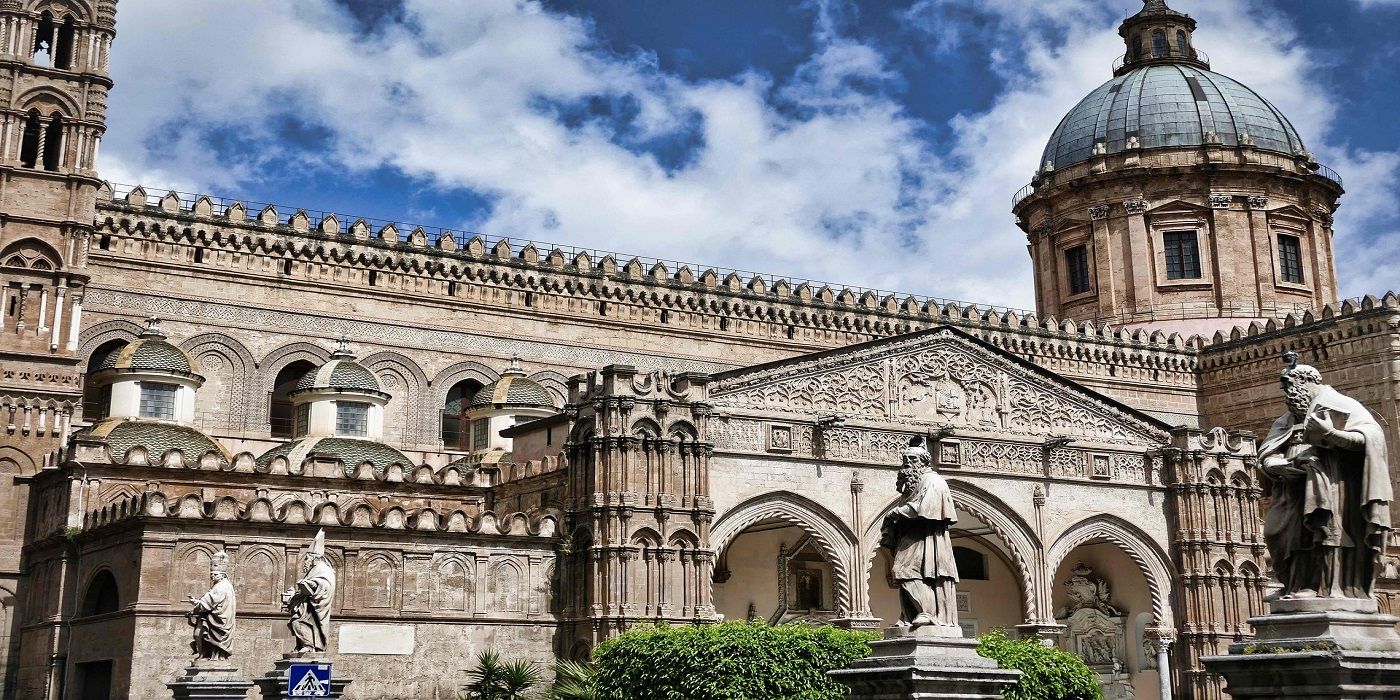
Vincenzo De Rosa
Discover what to see in Palermo in one day: the complete 24-hour guide to the Sicilian capital, including food, culture, art and entertainment.